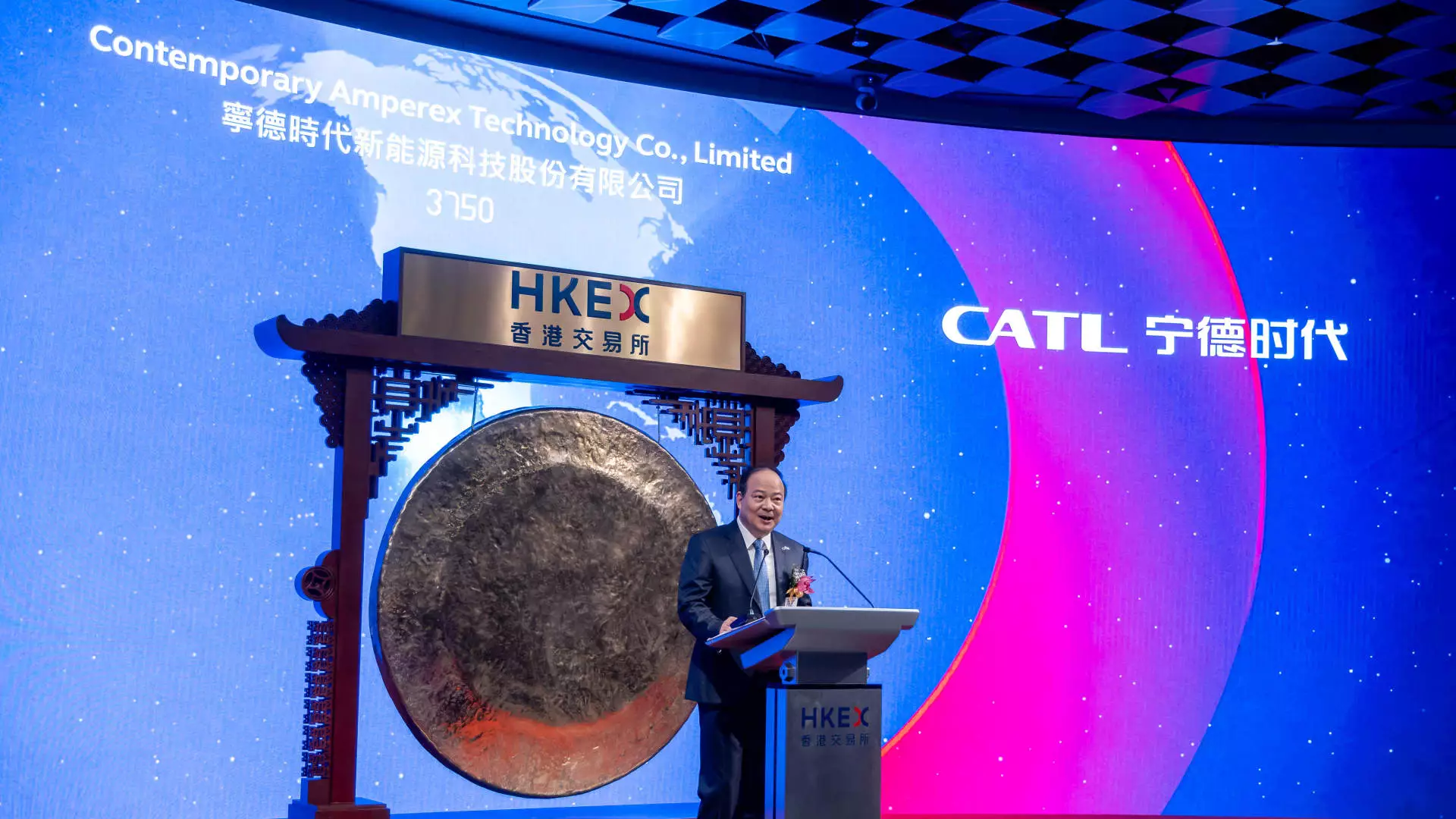Contemporary Amperex Technology (CATL) is no longer just a supplier of batteries; it is intricately positioning itself as a dominant force across the integrated ecosystem of electric mobility. While many credit the company for technological advancements and strategic expansion, a deeper analysis reveals a complex narrative of power consolidation that may serve as a double-edged sword for global markets. What is often perceived as innovation could very well be a calculated effort to establish a near-monopoly that could stifle competition and innovation in the long run.
The recent emphasis on AI-driven safety tools for batteries exemplifies CATL’s shift from hardware-focused manufacturing to software-powered ecosystems. This transition mirrors the megatrend in global technology—vertical integration designed not only to lock in clients but to control market parameters. As Morgan Stanley analysts highlight, these AI tools will likely evolve into comprehensive service platforms, giving CATL an unprecedented leverage over its customers and partners. If effective, this strategy could create barriers for emerging competitors, leaving fewer, larger players to dictate the pace of innovation.
Fundamentally, the narrative hints at a future where battery production is merely a foundation. The real game involves creating a “software ecosystem” that can lock in customers through safety, efficiency, and value-added solutions. This could translate into a dominant market position that makes it harder for new entrants to challenge CATL’s influence—arguably reducing market vibrancy in favor of a few conglomerates controlling both hardware and software. Such centralization runs counter to a competitive free-market ethos and raises questions about the sustainability of diversified innovation in the EV supply chain.
Strategic Expansion and Geopolitical Risks — A High-Stakes Chess Game
CATL’s aggressive expansion into Europe and Asia highlights a dual-layered strategy—diversifying revenue streams while mitigating geopolitical risks. Its substantial investments in Hungary and Indonesia exemplify a calculated effort to bypass trade barriers and political tensions, especially with the U.S. becoming increasingly wary of Chinese tech giants. The company’s efforts to establish factories abroad serve not just to grow sales but also to insulate itself from potential sanctions and restrictions that threaten to disrupt global supply chains.
However, this expansion is fraught with geopolitical pitfalls. The U.S. Pentagon’s decision to classify CATL as a “Chinese military” entity—despite the company’s denials—underscores the escalating risks of geopolitical contestation. While analysts may believe that these risks are already priced into CATL’s stock, the reality is that such labels can influence government procurement policies, regulatory environments, and consumer trust in key markets. The company’s reliance on licensing agreements with automakers like Ford adds another layer of vulnerability, since these partnerships could be affected by political shifts or national security concerns.
Furthermore, the strategic push into markets like Europe and Indonesia might be viewed as a defensive move—ensuring continued growth despite mounting tensions with the West. Nonetheless, in this new chess game, CATL operates under the shadow of global rivalry, forcing the company to balance rapid expansion with consideration of geopolitical stability. This ongoing tension underscores the fragility of such expansion plans, reminding stakeholders that international relations can shift unexpectedly, turning aggressive growth into costly liabilities.
The Real Power Play: Dominance Through Technology and Scale
At the core of CATL’s meteoric rise is its technological prowess and scale—far beyond mere manufacturing. Its collaborations with Xiaomi, Zeekr, and other automakers to supply tailored battery technologies point toward a strategic focus on future-proofing its market share. These partnerships also exemplify how CATL is embedding itself into various tiers of the electric vehicle supply chain—covering everything from passenger cars to hybrid systems.
The company’s pursuit of licensing revenues further solidifies its strategic ambitions. If fully realized, licensing could generate hundreds of millions annually while building a long-term ecosystem that keeps clients tethered. This resembles the approach of software giants, where the primary value shifts from the hardware itself to the services and intellectual property that underpin it. The potential revenue from licensing and system integration positions CATL as more than just a battery vendor; it transforms into an influential tech player with a network effect that’s hard to replicate.
Yet, despite these successes, the company faces significant hurdles. The ongoing U.S. restrictions threaten to limit access to critical markets and could diminish its global influence. The company must also contend with technological race dynamics—investing heavily in newer chemistries, recycling, and hybrid solutions—if it hopes to sustain its leadership position. This relentless pursuit of scale and innovation, while promising, risks overextension in a rapidly shifting geopolitical and technological landscape.
The Future Is Not Just Battery-Driven—it’s Ecosystem-Driven
In scrutinizing CATL’s trajectory, it becomes clear that the future of battery companies hinges less on raw production capacity and more on ecosystem control. Their investments in safety monitoring, AI technology, and licensing display a vision of monopolizing not just the supply chain but also the data and services that will underpin electric mobility for decades to come.
This intensifies a fundamental debate about the nature of industrial dominance in an era increasingly defined by data, software, and geopolitical influence. Is CATL positioning itself for sustainable growth, or is it building a hegemonic structure that may stifle innovation, competition, and consumer choice? Given the company’s strategic moves and the central role it plays in global supply chains, the implications are profound. The coming decade will reveal whether control of the ecosystem translates into enduring market dominance or whether external shocks—political, technological, or economic—will challenge its ascendancy.
The tide of technological advancement and geopolitics suggests that CATL’s role in shaping a new energy economy is as much about power and influence as it is about batteries. The balance of this power will determine whether innovation flourishes or stagnates in the shadow of monopolistic giants.

